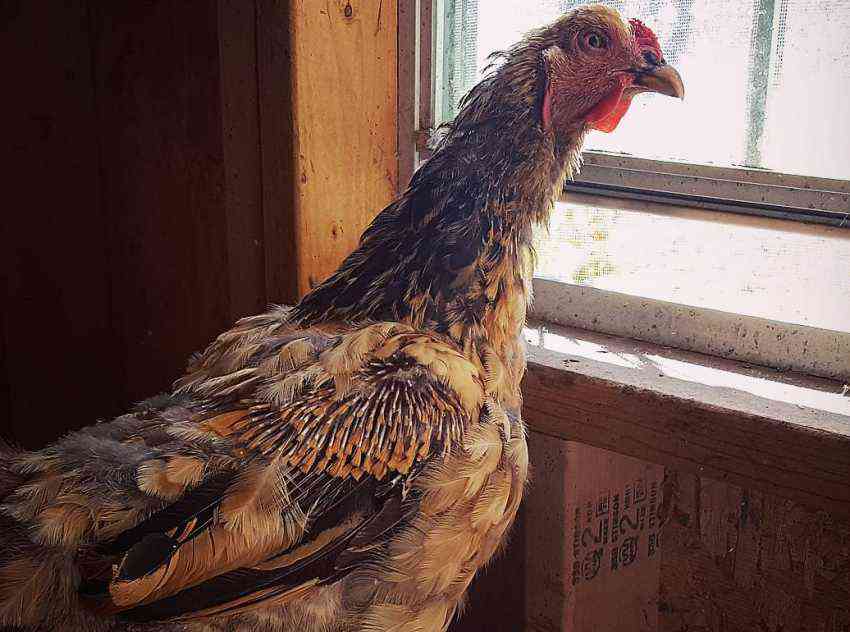When a chicken begins to molt, it can look pretty ruff. Unless you know what’s going on, you may think the chicken is sick, dying, or infected with mites. That’s not the case at all. For those individuals who are unfamiliar with what molting is, it’s the process in which the chicken loses its feathers for a certain amount of time before growing them back. So, how long do chickens molt?
Chicken molting lasts how long?
When trying to tackle question, how long does chicken molting last, you’ll never get an exact answer. That’s because the molting process for each chicken will be different. Some chickens molt for 2 to 3 weeks where as others will molt for a much longer period. From the time the chickens lose their feathers until they completely grow new ones, the average molting process lasts anywhere from 3 to 6 months. Some experience a shorter molting period where as others will experience a much longer one. It all depends on the genetics of the chicken.
Before chickens go through their yearly molting, they first experience 2 miniature molts. The first miniature molt usually takes place anywhere from 6 to 8 days after they’re born and can last up to 4 weeks. This is when the baby chicken acquires its first feathers. The second molting usually takes place when the chicken is 7 to 12 weeks old. During this miniature molting period, the chicken will get its second set of feathers. Once the first two miniature molts have been completed, the chicken will progress into the main molting process.
While chickens are molting, it’s very important to leave them alone. They should not be held, petted, or touched in any matter whatsoever. When the new feathers grow back, the pins of the feathers will begin to poke through the skin. This causes the chicken’s body to become extremely sensitive. Physical contact can cause severe pain. Once your chicken’s feathers completely grow back, you can hold and pet them without causing pain to the animal.

When do chickens molt?
Chickens usually molt during the latter part of the fall or the beginning of winter. Although this is quite inconvenient to most farmers, because you have to find a way to keep them warm, they only do it once a year. If you’re unsure how to keep them warm, follow these easy tips.
First, make sure there’s not a draft in the barn or the hen house. A cold draft can come from a door that doesn’t completely shut, a window that hasn’t been properly sealed, holes or spaces in the walls, and a damaged roof. If your barn or hen house is experiencing any of these issues, be sure to fix them right away.
Second, make sure the roof doesn’t leak and keep your chickens dry at all times. Chickens can get frostbitten quite easily, especially if they’re wet. This is why it’s important to keep moisture out. If you think the roof needs repair, make sure you do it before it snows, or temperatures drop significantly.
Lastly, heat lamps are a great way to provide heat for your chickens, but they’re also very dangerous as well. They have been known to cause fires when chickens knock them over. If you do decide to put heat lamps in your barn or hen house, make sure you use them with extreme caution. Keep them away from dry hay and other flammable items.
Know the difference between molting and mites
Molting and mites are two separate issues that commonly get confused with one another due to the fact that they both cause feathers to fall out. So, how can you tell the difference? When chickens have mites, their skin will become reddish and irritated. Their skin might even look infected too. That just doesn’t happen when a chicken is molting.
Another difference is the way the feathers fall out. When a chicken is molting, their feathers will fall out in an orderly fashion. The feathers usually start falling out around the head, then the neck, the body, and down towards the tail. When a chicken has mites on the other hand, their feathers fall out in random places. There is no systemic order.
Feed your chickens the right nutrients when they’re molting
When your chickens are in the process of growing new feathers, they’re going to need extra protein and nutrients to grow healthy and strong. Many farmers give their chickens mealworms, a protein supplement, to ensure they’re getting the right amount of nutrients. In addition to getting the right nutrients, your chickens should also get enough calories too. You’ll want to increase their meal size during the they’re molting. This is necessary during this time of growth.
- Can Chickens Eat Pineapple? Is It Healthy for Them? - February 21, 2019
- What Is a Wether Goat, and What Are the Benefits of Owning One? - February 12, 2019
- What Is the Largest Chicken Breed? Here Are the Top 10 Biggest Breeds - July 1, 2018
